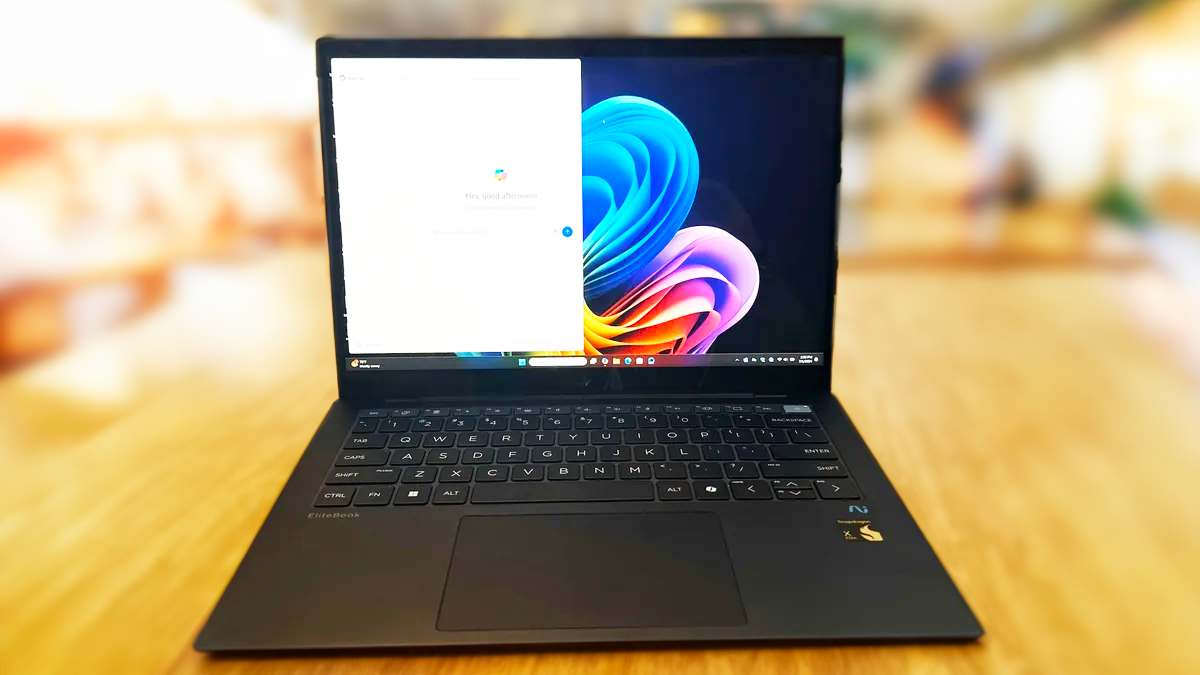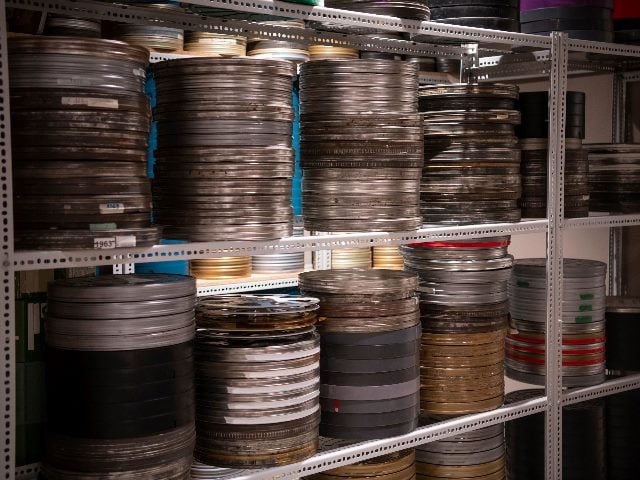
With a smaller body and simpler interface, the new X-S20 is the latest camera trying to attract a brand new audience to Fujifilm cameras, who may have been put off by the more complex design and larger size of models like the X-T5 and X-Pro3.
Although they look almost identical side-by-side, there are quite a lot of differences between the new XS20 and the previous XS10 model from 2020 when it comes to their core specifications and features.
So we’re bringing you this in-depth Fujifilm X-S20 vs X-S10 head-to-head comparison to help you choose between the two.
You can also read our detailed Fujifilm X-S20 review and Fujifilm X-S10 review to find out exactly what we think of both cameras.
Sensor

The image sensor used in the new X-S20 and the previous X-S10 is exactly the same – a 26 megapixel, APS-C sized, X-Trans 4 BSI CMOS sensor – which is also used by the X-Pro3 and X-T4 cameras.
So you will get exactly the same still and video image quality from either X-S series model.
Processor
The XS20 uses the latest X-Processor 5 processor, as also used in the X-T5, X-H2 and X-H2S, whereas the older XS10 has the previous generation X-Processor 4 processor.
This primarily means that the XS20 is able to offer more sophisticated auto-focusing and additional 6K video codecs which the XS10 doesn’t support.
ISO Speed
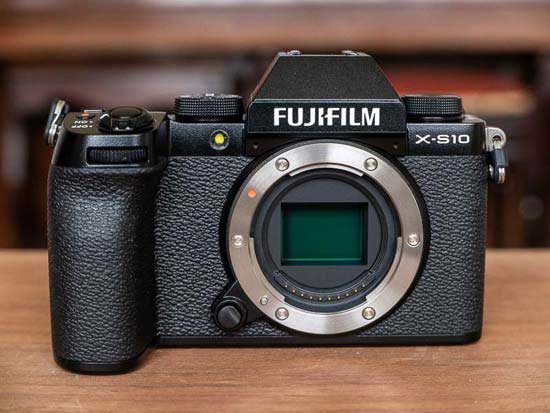
The native sensitivity range of both cameras is ISO 160 to ISO 12,800, which can be expanded to ISO 80 to ISO 51,200.
Video
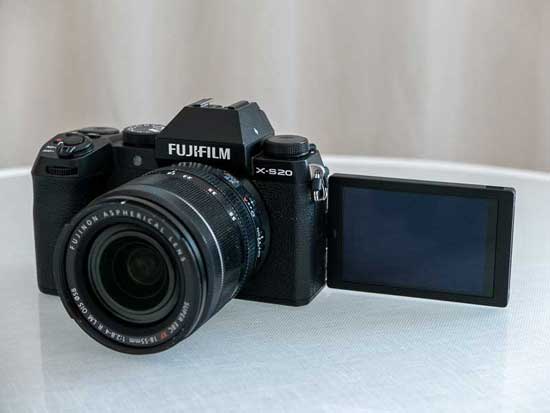
The X-S20 offers a better video mode than the X-S10, including the brand new dedicated VLOG shooting mode for vlogging.
The newer camera offers a highest quality rate of 6.2K/30P, plus DCI 4K/60P, 1080/60P, 1080/240P, recorded in 4:2:2 10-bit internally up to 360Mbps.
The previous model offered a highest quality rate of DCI 4K/60p video recorded in 4:2:0 10-bit internally.
Combined with a compatible HDMI recording device from Atomos or Blackmagic Design, 12-bit RAW video output from the X-S20 can be recorded as Apple ProRes RAW or Blackmagic RAW.
There’s also the very latest F-Log2 profile which supports an expanded 14+ stops of dynamic range, and a 3.5mm headphone jack has been added to the right-hand flank of the camera.
A new Vlog shooting mode has been introduced for Vlog production. Set the Shooting Mode dial on the top of the XS20 to “Vlog” to quickly change key camera settings with a touch of a button for video self-portraits. It also enables the equally new Product Priority auto-focus mode and Background Defocus option.
Both models have the Long GOP and All Intra compression formats, F-Log profile, 1080p/240p 10x slow-motion mode, digital image stabiliser which works in conjunction with the in-camera and lens-based systems, IS Mode Boost, different Main menu and Quick menu systems for stills and video modes, and a 3.5mm MIC socket.
Autofocus
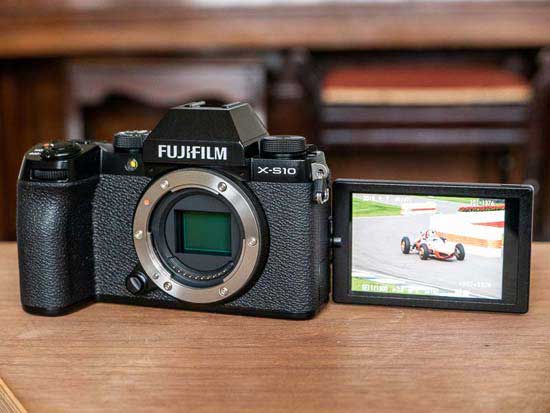
The new X-S20 has exactly the same hybrid autofocus system with phase detection and and contrast detections points as the X-S10, but the latter model doesn’t support the subject-detection AF developed with Deep Learning technology.
In the Single point AF mode there are up to 425 selectable AF points arranged in a 25×17 grid. Alternatively, the camera can be set to 117 points in a 13×9 grid, and the size of the points can also be varied.
In addition to Single point AF, there’s Zone AF which allows the AF points to be selected in 3×3, 5×5 or 7×7 groups, and Wide/Tracking AF.
The X-S20 can automatically detect animals, birds, cars, motorcycles, bicycles, airplanes, trains, insects and drones thanks to the X-Processor 5’s AI deep learning capabilities.
In addition the new AUTO Subject Detection function automatically detects and tracks a subject while keeping it in focus when taking stills and recording video.
Burst Shooting
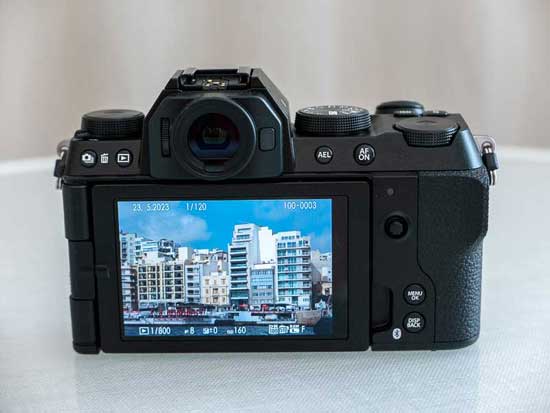
Both models offer the same respectable 8fps continuous shooting speed when using the mechanical shutter.
Both cameras can also shoot at 20fps when switching to the electronic shutter without any crop, or 30fps with a modest 1.25x crop applied.
Body and Design
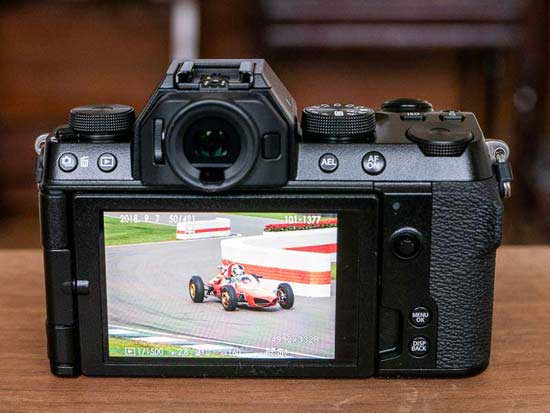
Despite using a significantly larger battery, the design of the body and controls is almost identical between the XS20 and the XS10.
The new model still has a large hand-grip like the original, whilst keeping the body almost as compact and lightweight, weighing in at 491g with a battery and memory card fitted.
That makes it just 26g heavier than the XS10 despite using a larger battery that more than doubles the number of shots that you can take.
Otherwise, the XS20 retains the relatively simple interface of its predecessor in order to try and make it more appealing to less experienced users than a more button-heavy camera like the X-T5.
It’s still not waterproof, though, so if this is a must-have feature, then you’ll need to step-up to the X-T4/5.
IBIS
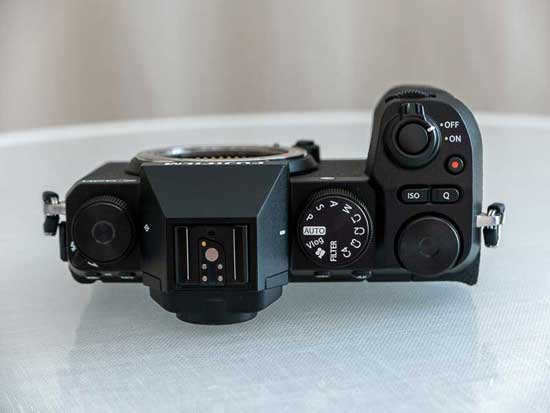
The XS20 is the latest Fujifilm camera to feature 5-axis in-body image stabilisation (IBIS).
The X-S10 provided up to 6 shutter steps of compensation, whereas the new X-S20 improves on that by supporting up to a maximum of 7 stops.
Viewfinder
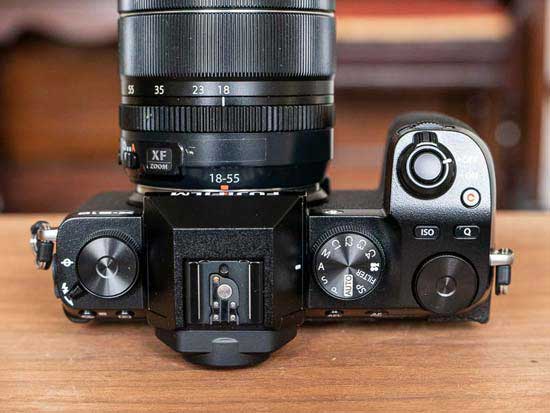
Both models use the same 2.36M-dot OLED electronic viewfinder with 0.62x magnification, 100fps refresh rate and a built-in eye sensor.
LCD Screen
Both cameras have a fully articulating vari-angle 3-inch LCD screen.
You can flip out the screen to the side, rotate it forwards for easier operation when pointing the camera at yourself, and fold it flat against the back of the camera to stop it from getting scratched.
This free-angle design proves to be very versatile screen for vlogging, movie shooting and photography in general.
What differs between the XS10 and XS20 is the resolution of the screen – 1.04M-dots versus 1.84M-dots respectively – which gives the X-S20 a noticeable edge.
Memory Cards
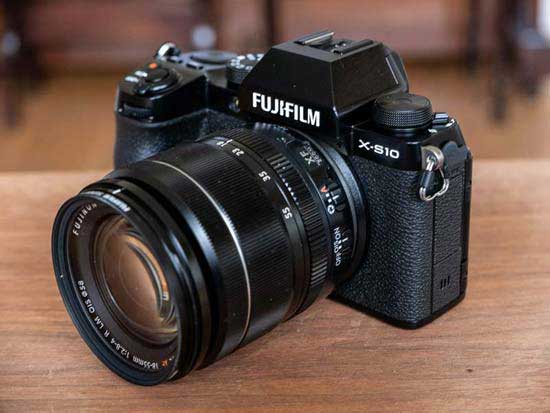
Perhaps unsurprisingly given the smaller, more compact size of the X-S20 and X-S10, they only have a single memory card slot, compared with the dual card slots of a larger camera like the X-T5.
What’s more, on the XS10/20 the memory card slot is next to the battery in a shared compartment on the bottom of the camera, whereas on the XT5 the memory cards are housed behind a lockable door on the side of the camera.
So the location of the memory card on the XS10 and XS20 is much less convenient, especially when the camera is mounted on a tripod, and the single memory card slot is less flexible and offers less peace of mind than the dual slots on the X-T5.
Battery Life
The Fujifilm X-S10 uses the smaller capacity NP-W126S battery found in the X-T3 and X-T30, rather than the larger capacity NP-W235 battery that the new X-S20 uses.
This offers a CIPA-rated battery life of up to 800 shots on a single charge in normal mode, versus a just 325 shots on the X-S10, which is a significant improvement.
Both cameras can also be powered and charged via a USB-C connection, which is useful if you’re out and about and have a compatible power-bank to plug the camera into.
Webcam
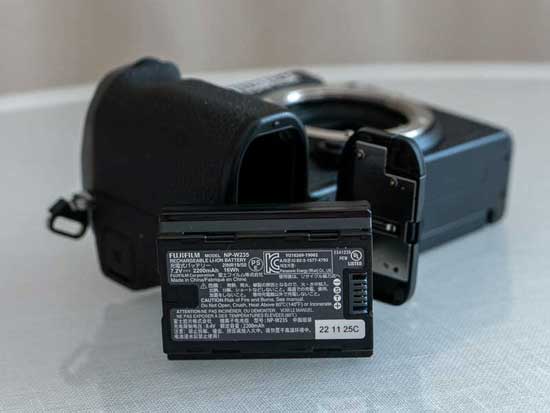
You can use a USB-Type C cable to connect the X-S20 to a computer to use it as a webcam without having to use any software, unlike the X-S10 which has to use the Fujifilm X Webcam app.
Price
In the UK the Fujifilm X-S10 costs £949 body only, £999 with the XC 15-45mm lens, or £1299 with the XF 18-55mm lens.
The Fujifilm X-S20 costs £1,249 body only, £1,399 with the XC 15-45mm lens, or £1,599 with the XF 18-55mm lens, so it’s substantially more than the X-S10.
Conclusion
The new Fujifilm X-S20 improves on the first-generation X-S10 in a number of significant ways, most notably much longer battery life, better auto-focusing system, 6K video support, higher-resolution LCD screen, dedicated headphone jack, and more effective IBIS, all in a similarly sized body. With the recent hikes in the cost of almost everything, though, it is priced at £300 more than the original model was launched at just three years ago.
So what do you think? Would you choose the new X-S20 or the still very capable X-S10? Leave a comment below!




